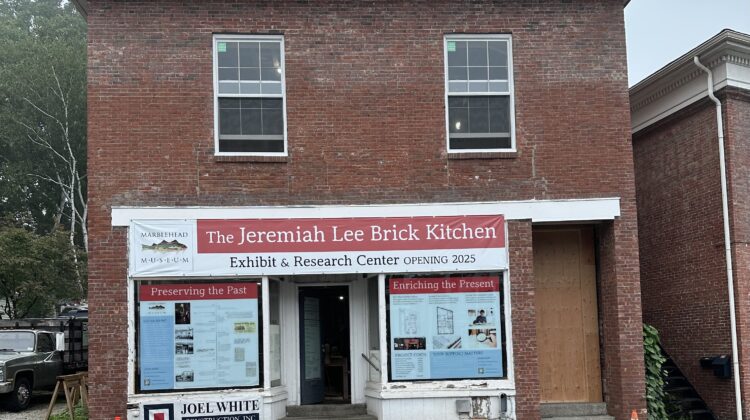The Marblehead Museum is fastidiously working to restore a historical building adjacent to the Jeremiah Lee Mansion that the museum purchased in April 2021.
After much research, the building is believed to have been used as an additional kitchen space and slave quarters for the Lee household. Deeds dated from 1765 to 1767 say the property was intended as a coach house or brick kitchen.
“There are remnants of door openings that were built for a coach house. There is also evidence of a cooking hearth,” Lauren McCormack, the museum’s executive director, said.
McCormack said that a lot of work has been done to learn about and interpret the building’s history. The museum has studied a combination of photographs, documents, paint analysis, and dendrochronology — the study of tree rings to determine their age — to gather information.
“All of these things put together tell us what we know today,” McCormack said.
The museum brought in architectural historian Myron Stachiw to help put some of the initial puzzle pieces together. For starters, the roof beam was analyzed and it was determined that it dates back to 1765. The period between 1785 and 1804 is still a bit of a mystery for the building’s history.
It is known that in 1813, the building was rented by William Haskell to set up a West India goods store. Haskell then purchased the building from Marblehead Bank in 1819.
In 1859, the Mugford Fire Association used the second floor of the building for a period of time. The association kept its engine near the building’s premises as well.
McCormack said that the second floor was also rented out as a hall for community use. The building hosted some interesting guests over the years, such as a boys’ prayer group, the Women’s Christian Temperance Union, and suffragists.
Some time before 1873, Marblehead Bank purchased the property and made improvements to it, such as disassembling the roof and adding 5 feet to the top of the structure before reassembling the roof.
In 1889, the building was lifted and brick walls were installed beneath the structure. All of this can be determined from the various types of brick that were used.
Fred Litchman bought the building in 1914 and started a printing and photograph shop. The building eventually became the Litchman-Orne Print Shop.
“It’s an ongoing process,” McCormack said. “Research will continue as the museum works to preserve and rehabilitate the building.”
The museum hopes to open the space by the end of 2025. When it opens, the first floor will house exhibits, the first of which will be about the enslaved people owned by Lee and in Marblehead in general. The second floor will house the museum’s archives.
The museum has owned and operated the Jeremiah Lee Mansion estate since 1909 and is one of three Massachusetts museums that owns original detached slave quarters.

